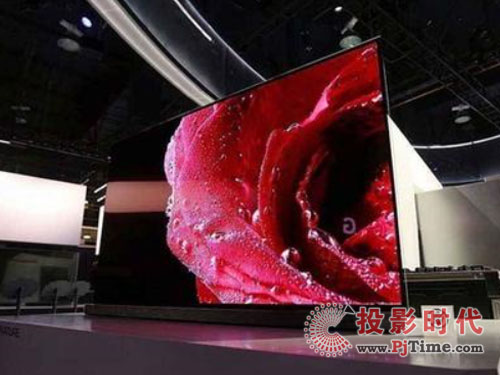In the color TV camp, OLED TVs can be regarded as one of the most high-tech products in the current market, especially its ultra-thin body design, which has attracted the attention of many consumers and has thus become The colorful electrical manufacturers sought after products. However, in my opinion, although OLED TVs have many advantages that traditional TVs cannot match, there are still some shortcomings that need to be improved. It will take some time before the actual popularity.

First of all, in terms of advantages, the most important feature of OLEDs is that each cell can emit light by itself. In a conventional LCD liquid crystal display, the liquid crystal itself cannot emit light, and it is necessary to add a backlight source below the panel. Due to structural differences, OLEDs can be thinner than LCD screens.
In the display process, the LCD controls the rotation angle of the liquid crystal molecules through the electric field so as to control the transmittance of the liquid crystal. The light of the backlight passes through the liquid crystal molecules and then passes through the color filter to display different colors. In this process, the backlight is always on. In contrast, OLEDs are self-illuminating and can be lighted where they need to be lighted.
Secondly, compared with the traditional LCD panel, the OLED panel has a faster response speed and a wider viewing angle, and due to the self-luminous characteristics, the OLED panel can achieve an infinite contrast ratio and there is no light leakage problem.
Theoretically speaking, OLED panels can replace LCDs and become the next generation of mainstream display materials without much difference in output and cost. However, the problem is that until now, the output and cost of OLEDs have been very problematic.
In the use of large OLED panels for televisions, LG Display is currently the only supplier. No matter what brand of TV is, as long as it is OLED, it is definitely the panel of LG Display.
There are two problems here. The first is that the OLED panel is expensive, which leads to a high selling price of OLED TVs. The second is that LG Display has limited production capacity and cannot guarantee sufficient shipments. With the current cost and capacity of OLED panels, it is impossible to use them in TVs with mainstream prices. OLED panels such as the Sony A1 also use panels provided by LG Display. The greater significance is also in the brand, not as a main force. Models are shipped in large quantities.
In addition, although OLED TV technology is leading, it is still controversial as to how much advantages OLEDs can bring on TVs compared to immediate results in VR and other fields. And similar to the OLED screen used on mobile phones, the OLED screens on TVs also have hidden dangers such as attenuation and burn-in. Taking into account that the life cycle of televisions is much longer than that of mobile phones, the future of OLEDs on televisions is still full of unknownness and popularity. The road will still take time.
SHENZHEN CHONDEKUAI TECHNOLOGY CO.LTD , https://www.szfourinone.com